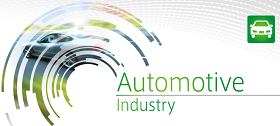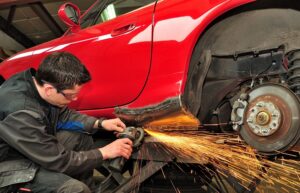A heat engine, also called internal combustion, is an assembly of moving parts for the operation of the engine. Their number is several thousand elements.a
The goal remans the same, regardless of the fossil fuel used: to trigger an explosive or compression reaction in order to create energy power to move the vehicle forward via a transmission system.
The order of operation and its precision are essential because only a perfectly orchestrated movement allows the desired effect to be achieved.
The slightest shift can have serious consequences, with partial or total destruction of the engine.
What is car distribution?
To ensure that everything runs smoothly, a conductor has been designed and planned: it is the distribution. This synchronization is carried out by a part very regularly mentioned when buying a used vehicle, since it is the one that organizes the dance between the intake of the fuel and its evacuation (exhaust). This part can be made of metal in the form of a chain or rubber, and is then called a timing belt.
This choice is made by the engine designer who adopts one of these technologies. This decision is made based on his experience, his convictions and the technical and environmental constraints linked to pollution or the geographical location of use. In summary, as a buyer, the distribution system is not chosen by you! It is imposed by the engine of the model you select.
Distribution types and maintenance
Here are some simple explanations to help you make your choice. There are two distribution systems on a car: chain or belt.
> Visual inspection : If your vehicle has a protective window, you can directly observe the distribution system. The timing belt is usually a black and flexible rubber, while the timing chain is made of metal and looks like a bicycle chain.
> Reference to the age and model of the car : Certain makes and models of cars are more likely to use one or he other technology. For example, older cars are often equipped with a timing chain.
> Consultation of the maintenance booklet : This document can indicate the type of distribution, especially if the vehicle has already had a belt or chain replacement.
Visually similar to a bicycle chain, this component is usually hidden under the hood and requires disassembly to be observed. The timing chain is favored for its robustness, being designed to last the entire life of the vehicle, often at least 200,000 kilometers depending on the manufacturer. Like any product, the timing chain has its advantages but also its disadvantages. Its advantages include its long life and its resistance to various operating conditions. Some manufacturers favor the chain exclusively, thus excluding the rubber belt.
The reasons are often historical with a total mastery of this technology but also commercial.
Some engines are specifically designed for much more demanding operating conditions than those encountered in mainland France.
An additional advantage is that in most cases a chain break is not sudden, but announced by noises coming from the crankcase, resulting from its gradual elongation under stress.
However, some disadvantages include the high cost of replacement, both for the part and labor, as well as increased resistance to movement, theoretically leading to increased fuel consumption and higher noise levels compared to a belt.
When to change the timing chain?
There is no set frequency for replacing the timing chain. However, there are signs that a replacement is necessary. If you notice an abnormal noise, a loss of engine power, jerking or engine misfiring, it may be time to change the timing chain. In addition, if you notice the presence of metal particles in the oil, this can also be a sign that the timing chain is at the end of its life. Some recommend replacing the timing chain every 10 years, even if it does not show any symptoms of failure.



